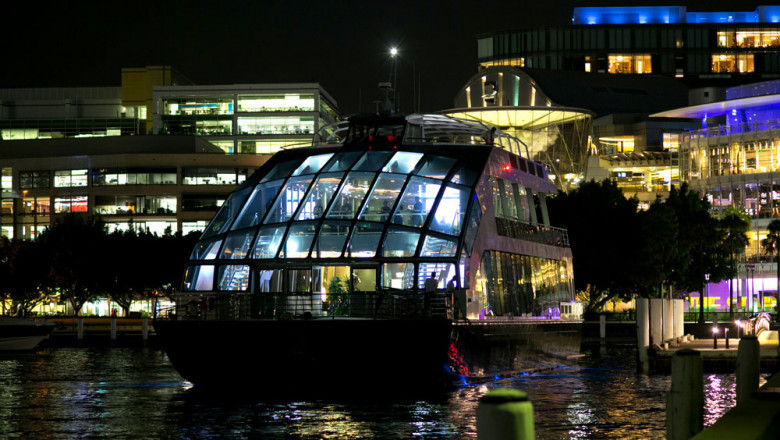views

7 Intriguing Facts about the Sydney Opera House
Did you know that Australia’s biggest tourist attraction, the Sydney Opera House, was a highly controversial project? It is one of the greatest architectural works of the 20th Century, exhibiting creativity both in architectural form and structural design. Situated on the harbourfront, the Opera House looks exceptionally ravishing in the after hours, when the lights come out and the glimmering waters enhance its ethereal beauty. The best views would be from the decks of one of the Sydney Harbour dinner cruises, as you can enjoy the brilliance of this masterpiece from a unique perspective.
This in no way short sells the beauty of the Opera House during the day. The lunch cruises on Sydney Harbour are the tourist’s go to option for the best sightseeing experience and photo opportunities of this marvel from different angles. Holding its position as a world-famous architectural icon, there are some intriguing facts of Sydney Opera House you need to know about:
1) It’s so much more than an Opera House
As the name suggests, it is not a mere Opera House. With more than a million annual visitors, this multi-venue performing arts complex is known to host some 1,500 performances in a year. There are six venues in the building namely the Main Concert Hall, Joan Sutherland Theatre, Drama Theatre, Playhouse, Studio and Utzon Room.
2) Born from uncommon and unique sources of inspiration
In 1956, Danish architect, Jorn Utzon won an international competition for designing the Sydney Opera House. It is said that he was inspired to design the arch roof of the Opera House while peeling an orange. This roof was in the shape of an orange peel, known as shells. The building’s functions and colours were inspired by nature as well. Bird wings, clouds, shells, walnuts, snails, palm fronds and Mayan temples were also his source of inspiration.
3) The unknown architect’s rejected design won the competition
Jorn Utzon was an unknown architect from Denmark when he participated in the Opera House International Design Competition. There were a total of four judges in the competition, H.Ingram Ashworth, Dr. Jeslie Martin, Cobden Parkes and Eero Saarinen. The fourth judge, Saarinen, attended ten days after the competition had begun. He was totally unimpressed by the shortlisted contestants. In fact, he pulled out Utzon’s entry out of a pile of rejected designs and declared it as a sureshot winner.
4) Impractical dreamer resigned from the project
Jorn Utzon moved to Australia to supervise the project, but the cost of the project exceeded initial estimates. This eventually caused tension between Utzon and the local government. Later, things got out of hand when David Hughes, the Minister for Public Works, denounced his work in 1965 portraying him as an “impractical dreamer”. This resulted in Utzon’s resignation in 1966 before the completion of the Opera House in 1973.
5) New changes implemented by the new architect
After Utzon’s resignation, the project was taken over by Australian architect, Peter Hall. He made a few changes to Utzon’s designs and redesigned the main concert hall. Intended to be a multi-purpose hall to suit opera performances and concerts, it was solely used as a concert hall. Though Peter Hall supervised the project in the final phase, Utzon gained credit for the design of the building. Utzon was even honoured for his contribution, with one of the exhibition spaces being named “The Utzon Room”.
6) A poultry mishap leads to fixing of net above the orchestra pit
There was an unexpected incident during the opera by Boris Godunov in the 1980s. What was special about this performance was that live chickens were featured in it. One of them couldn’t help but jump right off the stage and land on top of the cellist. Since then, the Opera House installed a net above the orchestra pit in the Joan Sutherland Theatre.
7) The project exceeded its estimated budget
The project was estimated at $7million, but the overall cost of the building amounted to a whopping $102 million. What was supposed to have been completed in 1963, eventually became a reality only in 1974. The end result, however, was spectacular for all to see and definitely worth the money.
Have I piqued your interest enough for a visit to the Opera House, even if it's your second time round? Comment down below what you think!











